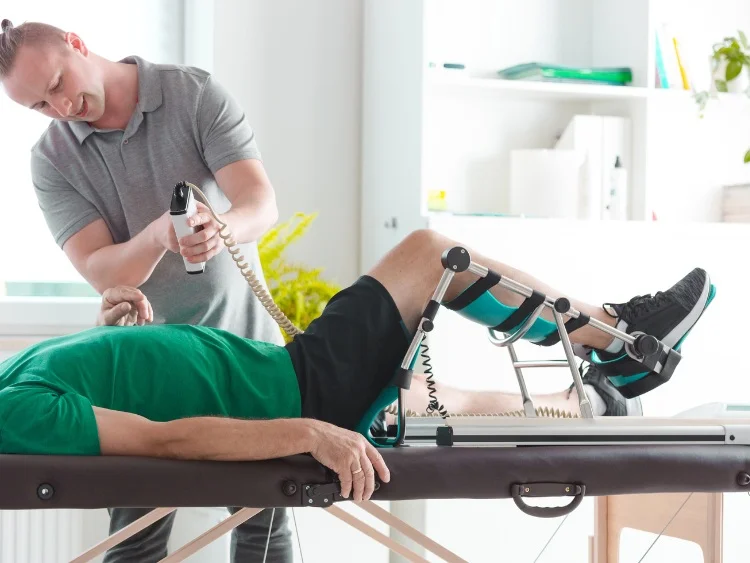Top 5 mistakes after knee replacement
A Knee replacement, also known as a knee arthroplasty, is a very common and successful surgery for people suffering from severe arthritis and pain in the knee joint.
This article will provide you with the top 5 mistakes after a Knee Replacement based on our extensive clinical experience.
1. Not Being Prepared For Limitations After Surgery :
After Knee Replacement surgery, you are likely to experience significant pain and functional restriction for a period of 3-6 months.
You will not be able to drive for at least 6 weeks after surgery, and you will not be able to climb stairs initially. It is imperative to have a plan for how you will manage during this period. This includes simple practicalities such as:
- Will you need additional help if you live alone?
- Do you have stairs at home? Can you move your bed downstairs?
- How will you prepare and cook meals?
- Do you need equipment to help you wash, like a stool for the shower?
- How will you get to your follow-up appointments and physical therapy?

top 5 mistakes after knee replacement
2. Not Taking Pain Medication Regularly :
Medication is essential after surgery; it will help manage the inflammation caused by the major surgery and keep pain to a tolerable level to help you recover.
If your knee pain is too high, you won’t be able to sleep well, which will slow down your recovery. Also, if your pain is too high, you won’t be able to complete the essential mobility and other physical therapy for your recovery.
A common mistake that is made is not taking the medication regularly and only taking it when the pain starts to get worse.
This can be okay for some people, but the risk is that the pain will get too high and take a period to reduce, which can be several days. It takes a lot longer for medication to take effect once the pain has increased to a high level, so it works best to keep it down.
3. Avoiding Movement or Rehabilitation
As mentioned above, pain is a significant obstacle to rehabilitation, and it can be a deterrent to movement. However, most people find an improvement in pain with movement, up to a point.
So, while the first few bends of your knee or the first few steps of walking might be very painful, this is expected to be reduced with further repetitions.
Frequency of movement is essential, especially in the early stages of your recovery. You must do your physical therapy exercises and walk regularly throughout the day for the best results.
This means that the right amount and the correct level of exercise must be found so that you can do them several times per day, little and often.
You can read more about rehabilitation for knee arthritis in our related article: Arthritis Knee Exercises.

4. Doing Too Much Activity Too Soon
Doing too much too soon can be a pitfall, especially with younger, fitter individuals who are highly motivated to return to all their activities.
A delicate balance can be found with recovery from knee replacement surgery. It would help if you pushed through some pain but not too much and not for too long.
If you overdo it, you may be unable to repeat your exercises for that day or the next few days, as your knee might be too painful or swollen. We call this boom-bust.
When you do too much when you feel good, you are being laid up because you have overdone it. A good rule to follow is that pain and swelling after exercise should settle quickly, within an hour or two, so that you can repeat it several times per day.
To aid recovery, you can use ice packs, medication (as we mentioned above) and good sleep, rest and nutrition.

5. Not Doing Pre-Surgery Rehabilitation (Prehab)
Benjamin Franklin once said, “By failing to prepare, you are preparing to fail”. Before going for major surgery, you need to prepare your body.
There are two main reasons for prehab. Firstly, you can strengthen your muscles before to cope with the surgery better. After surgery, there is always a period of significantly less activity, during which time muscle bulk and strength will always be lost.
Therefore, the more muscle bulk you have before surgery, the better. The second main reason for doing prehab exercises is that they will be similar to post-surgery rehabilitation. You can, therefore, teach your body how to do these movements so that they are familiar to you.
After surgery, your body will feel different, and it takes time to regain complete control. A good memory of how exercises should be done and how they should feel will speed up this process.
Top 5 Mistakes After Knee ReplacementTop 5 Mistakes After Knee ReplacementTop 5 Mistakes After Knee ReplacementTop 5 Mistakes After Knee Replacement
READ MORE :
Top 5 Mistakes After Knee Replacement Top 5 Mistakes After Knee ReplacementTop 5 Mistakes After Knee ReplacementTop 5 Mistakes After Knee ReplacementTop 5 Mistakes After Knee Replacement



